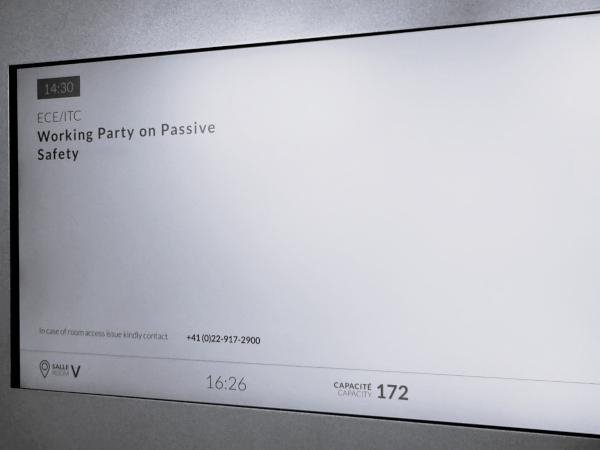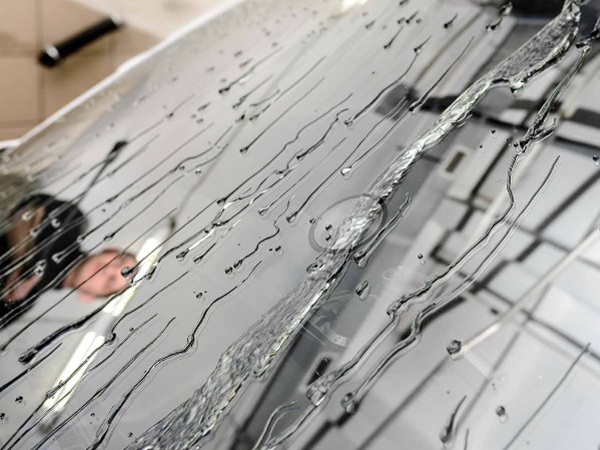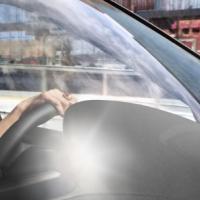Date: 16 June 2005
The statute was adopted in 1997.
What is quirky isn't the statute itself, but the intermittent enforcement of the law.
Wilson presided over a recent hearing involving a citation given last August to Jeff Tanner for too-dark window tinting.
Tanner claims he was stopped by state police officer David Arbuckle and after he pulled over, he immediately rolled his window down. Arbuckle asked Tanner to roll his window up a few inches and he used a device on the window to determined the tinting was too dark.
Arbuckle said he stopped Tanner because, even though the stop took place in the afternoon, he believed the tinting was too dark.
"The windows were extremely dark," Arbuckle said.
Under state law, tinting must have a 20 percent transmissivity rate, allowing police officers to see into the vehicle. Windows tinted darker are in violation of state law. In addition, labels must be affixed to the windows indicating the transmissivity of the tinting.
Wilson commented several times on his inexperience in dealing with the window tinting statute.
"This is my first experience with the (law)," Wilson said. "The statute is less than artfully drafted."
Tanner said he fought the citation because he wanted people to "know about this law, 'cause we all go out and get our windows tinted." His ticket cost him $75.
Tanner's attorney, Jefferson R. Rhodes, is concerned that Arbuckle's stopping of Tanner based on his subjective judgment was a violation of the Fourth Amendment.
"I think there's a tremendous probable cause issue here," Rhodes said.
Rhodes also cited the lack of research into the effectiveness of the device Arbuckle used to test the tint and the lack of specialized training Arbuckle had received prior to putting the device into service.
As for a possible Fourth Amendment violation, prosecutor Reed Thompson argued that the stop had nothing to do with unreasonable search and seizure.
"He (Arbuckle) pulled over a vehicle he could not see in," Thompson said. "As for his using subjective judgment ... that's what we pay police officers for."
Tanner, who bought his truck with the too-dark tint already in place, is peeved by the whole deal: "Don't they have something better to do than run around chasing people for tint? It's a minute thing."
Arbuckle's reason for checking Tanner's tint is a chorus of what most in law enforcement have a concern about: officer safety.
"Are we going to wait until an officer gets shot or seriously injured through a dark-tinted window we can't see through before we get serious enough to enforce the law?" he asked. "It shouldn't come down to that."
Arbuckle says he's written probably 30 or 40 tickets for too-dark window tint and agrees writing citations for too-dark tint in New Mexico is akin to shooting fish in a barrel.
"I could write a hundred tickets a day," he said. "It's a public safety issue too. I just want people to understand I'm not trying to invade their privacy."
Alamogordo Department of Public Safety Chief Sam Trujillo learned that Arbuckle had the testing device so he assigned one of his supervisors to contact Arbuckle to ask if the police department could borrow it.
"The reason we did that," Trujillo said, "was because we wanted to inspect our own vehicles."
Department personnel perform weekly routine maintenance inspections on their vehicles. The department has some marked vehicles with factory-level tint and some unmarked vehicles, used for surveillance, which have darker tint.
Trujillo was informed windows on some of his department's unmarked vehicles were lower than the 20 percent light transmission allowed. He ordered new tint to be installed on those vehicles as well as those that were exempt from that state law. Some of the vehicles were exempt because the tint was installed prior to the adoption of the 1997 statute.
Trujillo said his department doesn't enforce the tint statute because it doesn't have a device to determine whether the tint it too dark.
Magistrate Ted McCutcheon said he handles the problem, on a first offense, by giving offenders 30 days to remove illegal tint.
"Bring me proof or bring the car and let me inspect it and we'll dismiss the ticket. We haven't had any second offenses yet. The reason we do that is because no one's ever enforced that law and now we have an officer enforcing that law, so I'm giving people an opportunity to correct their problem or get the law changed."
"I think the law needs some adjustments," he added.
McCutcheon said it would be very simple to pass a law that required drivers to roll down their windows during a traffic stop so officers can see inside a car.
Oscar Veyna, owner of Oscar's Window Tinting, says all of his customers complains about the law. If one of them wants a tint darker than the law allows, he makes them sign a form acknowledging they know the statute and the consequences of too-dark tint.
Veyna questions why so much emphasis is now being placed upon the law.
The Tint-o-Meter used by Arbuckle was purchased by a state police officer in June of 2003. When that officer moved into drug enforcement, he passed the device along to Arbuckle.
"The equipment officer Arbuckle uses is not issued by the department," said state police Capt. Cory Gossett. "But there are officers who carry their own firearms which are not issued by the department."
Gossett hasn't questioned Arbuckle about the equipment and hasn't received any complaints from the public or the courts. His main concern is his men.
"Dark window tinting is an officer safety issue and too dark tinting is against the law," he said.
Gossett added: "An officer has gone out of his way to purchase something to enhance his job and the public appears to have taken offense to that."
But Veyna thinks Arbuckle has been wasting his time writing citations.
"We have bigger crimes here in New Mexico," Veyna said.
Otero County Sheriff John Blansett echoes the officer safety issue.
"When you do a vehicle stop and make an approach, you can't see in the car and what they're doing, or how many people there are," he said.
"But as far as an enforcement issue," he added, "we're not going to use our resources for this type of issue. We have bigger fish to fry."



















Add new comment